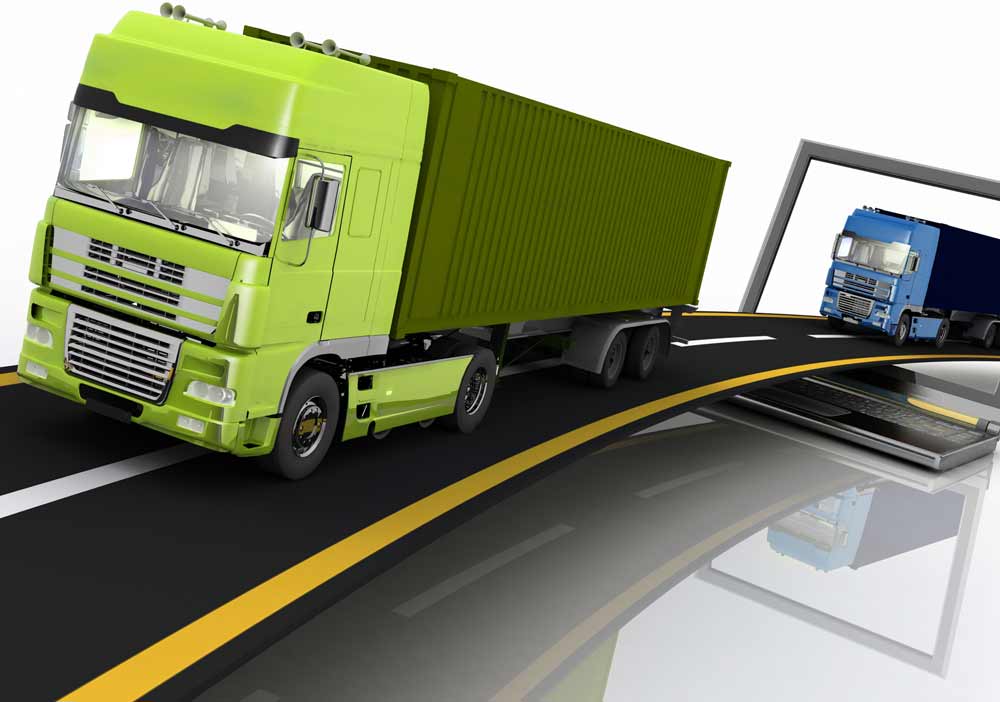5 of the Biggest Productivity Challenges Fleet Managers Face in Fleet Management Fleet managers are faced with several challenges that impact both productivity and profitability when managing a fleet. Here are five of the most common challenges you may be facing and to overcome them by leveraging telematics and workflow automation.
Opinions expressed by Entrepreneur contributors are their own.
You're reading Entrepreneur South Africa, an international franchise of Entrepreneur Media.

As a fleet manager, efficiency is key. Unfortunately, most fleet managers find themselves immersed in tasks that are both time-consuming and add little to the bottom line of the company – if anything.
A recent survey of over a thousand companies across the EU and the USA found that SMEs are frustrated by the expense, time ineffectiveness and potential for error that handling essential tasks manually often results in.
Related: How TomTom Telematics Can Keep Your Business Moving Forward
"Secondly, managers want digital solutions to take care of these jobs. These two things came up again and again," says Beverly Wise, Sales Director UK, TomTom Telematics.
The study also found that:
- 59% of respondents agreed that reporting working times took up too much time
- Fuel and vehicle management was an area for concern, with 66% saying they could do more to reduce fuel costs
- 55% say their vehicle costs are higher than necessary.
Here are the top five challenges that fleet managers face in fleet management and how they can be overcome through telematics and workflow automation.
1. Excessive time spent on fleet management admin tasks

It might not appear as a cost on your financial statement, but time spent on administration tasks that aren't core business activities is an expense that can easily add up when it comes to fleet management.
Tasks like quoting and invoicing can cut into your day, reducing your productivity and ultimately limiting the amount of time you can spend on revenue-generating activities.
In TomTom's recent global study on the biggest challenges that fleet decision-makers face, 49% of fleet managers say that at least one of their team members spend 1.5 to 2 hours on quoting and invoicing, 42% on identifying and dispatching the best worker for the job, 43% on expense management and 40% on keeping customers informed.
This indicates a staggering number of lost hours spent working on non-core business activities. How can fleet managers shift their focus, and that of their teams, to what matters most?
How you make more time for core fleet management activities
Paper-based systems add an additional layer of administrative duties to your tasks, which inevitably slows your processing time. Think about the last time you had to hunt through piles of paper or countless files for that specific quote?
By embracing a more digitised workflow, admin tasks will require less of your time and reduce the risk of human error and miscommunication.
For example, you can automate communication with your workforce and other routine tasks like sending jobs to your fleet drivers, invoicing and billing your customers, routing and scheduling your deliveries, managing your operating expenses, creating service and maintenance reminders, and conducting vehicle checks.
TomTom's WEBFLEET solution provides fleet managers with job-by-job insights that deliver accurate time spent with clients and automated invoices, which can speed up billing.
2. The high cost of fuel

Fuel is a major cost for any company that runs a fleet. In South Africa, fuel has been on an upward price incline as a result of global increases, power outages, rising costs of crude oil and an increase in fuel levies. During the first quarter of 2019, the fuel price increased by almost R3c/L. This translates into up to R280 spent on taxes each time a driver fills up a 50L tank.
Fleet managers and businesses are feeling the pain, with TomTom's study revealing that fleet managers believe their vehicles are draining more money from the business than they should, with 34% of them agreeing that their company's vehicle costs are higher than necessary.
How to manage fuel effectively
An important component of a fleet manager's responsibilities is fuel management and finding ways to save on fuel costs and consumption.
You can only change what you track. Identify fuel consumption trends to reduce usage in your entire fleet. To do this you need to consistently:
- Track fuel consumption
- Check instances of overuse of fuel
- Monitor driver behaviour and how it impacts fuel consumption
- Implement digitisation through vehicle telematics to reduce fuel usage
"Fleet optimisation applications can help a fleet manager create efficient routes and find "continuous-move opportunities' for trucks and trailers, so they don't sit idle for long periods," says Phoenix Zhang, senior analyst at Forrester Research.
Tips to reduce fleet fuel costs

Tip 1: Implement digitisation
81% of SMEs say digitisation boosts output, but many still rely on manual processes. It's time you improved your fleet's efficiency.
TomTom found that 26% of fleet managers now fully automate expense management, 22% fully automate choosing and dispatching drivers for each job and 26% fully automate sending updates to customers.
Implementing telematics means you can use data – the fuel for modern business efficiency – to power your business's productivity and save you time and money. One of the most valuable aspects of a more digitised workflow is the ability to record, store and track all the data being streamed back from your vehicles.
Related: Getting More Than You Asked For With TomTom Telematics
Take time-consuming manual tasks off your plate with WEBFLEET, which supports a more efficient, time effective operation, including a logbook with real-time vehicle odometer and working time registration, which are both automated. These functions support more accurate reporting and reduce the admin load.
Having access to and control over this vital information is crucial to taking steps that will reduce total cost of ownership. For example, you can use data on fuel consumption to identify areas of excess and data on driving behaviour to improve driving methods and reduce insurance premiums.
Tip 2: Reduce idle time
The average fleet vehicle burns around 19 litres of fuel every hour by idling between three to four hours a day, according to Tom Kanewske, vice president of business development at Derive Systems.
Added up, the typical service fleet vehicle could burn up to five litres of fuel every day. As the oil and petrol prices fluctuate, so will the petrol price. So if you run a fleet of, for example, 50 vehicles, idling can quickly become a very large expense.
"Reducing the idling time of vehicles saves fuel while also reducing engine wear and associated maintenance costs, which will also help save costs in the future," said Bernie Kavanagh, senior vice president and general manager at WEX Inc.
Digital software enables fleet managers to analyse driver behaviour, providing you with insights into idle times and your driver's performance in the field.
Tip 3: Start a programme to reduce fuel cost
"Even with the current cost, fuel remains one of the biggest expenses for any fleet," says Andy Hall, assistant manager, Fuel & GMS for ARI. Some fleets' fuel costs can account for as much as 60% of the fleet's operating budget.
A fuel cost reduction programme is a good way to monitor and reduce fuel usage – but only if implemented properly. Begin with a written policy, suggests Hall.
"A written policy defines the expectations for drivers around fuel and sets the parameters around acceptable fuel practices. Communicate the policy to both your old and new drivers on an annual basis." Also consider adding the policy and fuel reduction tips to your required routine driver training.
3. Rising fleet vehicle maintenance costs

Vehicle maintenance is critical. Your fleet of vehicles needs to keep running smoothly to prevent unexpected breakdowns, which can be expensive. Even something as minor as not checking tyre pressures can result in knock-on costs – loss of tyre pressure costs you 3% of your mileage, for example.
In fact, respondents to TomTom's study indicated that their vehicle costs are higher than necessary – indicating that vehicle costs can become overwhelming.
How can fleet managers ensure regular maintenance is carried out routinely, while juggling all the other priorities on their lists?
How to reduce fleet vehicle maintenance costs:

Top Tip: Automate your maintenance schedule
When are your vehicles due for maintenance? If you're not sure, this could be a bigger cost than you anticipate.
You have a lot on your daily to-do list and staying up-to-date with your fleet's maintenance schedule and service requirements may be a time-consuming task, but without the correct workflow automation solution in place, it can also be expensive.
Related: Driving Your Business Growth Towards More Customers
The right solution offers the benefit of regular service and maintenance reminders (based on date, mileage or even hours of use), which could help you save time and money.
Many fleet managers are also using digital solutions to monitor maintenance scheduling,
alerting them when a vehicle shows signs of malfunction, so that they can act before it suffers a costly breakdown.
TomTom's workflow automation solution can assist with automating maintenance schedules. As well as receiving regular maintenance schedule alerts, you're automatically notified when a vehicle shows sign of malfunction.
4. Relaying messages accurately to fleet drivers

Communication with your drivers as a fleet manager can be challenging, because you're often dealing with drivers out on the road, not onsite. Reaching your drivers via SMS, email, radio or phone isn't always possible, making communication even more complex.
Miscommunication is common between fleet managers and their teams, and this can lead to assigned schedules not being followed correctly. In fact, 36% of fleet managers say that communicating the daily schedule to workers in the field takes up to 2 hours of their time every day, indicating a loss of productivity for fleet managers.
How to improve communication with your fleet drivers
Modern organisations are using software and digital solutions to streamline and simplify the way they manage their people in the field. While messages and orders can be sent with greater clarity to the driver, the vehicles can send automated updates back to the office regarding the status of the order and the estimated time of arrival (ETA).
TomTom enables you to simplify your order workflow and save time by sending jobs and order instructions straight from your office to your driver's TomTom PRO Driver Terminal. The terminal reads the message aloud to avoid distracting the driver. As a result, you stay connected with your team in the field, getting regular updates on order status and ETAs, so you can react dynamically to unexpected events.
Telematics can help create a more dynamic, flexible workflow, while giving the fleet manager and your team in the office a clearer, more complete view of how your fleet is performing on the roads.
5. Delivering to customers within the estimated time of arrival

More than 60% of fleet managers say the inability of field teams to follow assigned schedules has a negative impact on the business. Inaccurate estimated times of arrival for deliveries in particular can have a negative impact on the business's reputation. Customers are no longer satisfied with rough estimations that span a few days – instead they want to know the exact time window on the exact day that they will receive their goods.
Businesses need to adapt to consumer expectations, and fleet management assists in ensuring that quality customer service is provided. This is critical in terms of business survival, particularly when it comes to delivering within the estimated time of arrival.
Because of this, 40% of fleet managers find themselves spending up to 2 hours each day keeping customers informed of when to expect their deliveries, according to TomTom's recent study.
How to calculate precise ETAs through digitisation
Thanks to digitisation, traffic can now be monitored and predicted with an excellent level of accuracy and clarity. Fleet managers are utilising this in their working processes, calculating more precise ETAs for customers.
Also, communicating unexpected schedule changes to the customer can be automated, so they are always kept informed in the quickest and simplest way possible if a delay occurs. Digitisation therefore removes a lot of the stress from the entire process for the driver, the customer and the office team.
Related: Time Is Money And It's Time You Saved Both When Running Your Fleet
WEBFLEET enables you to give more accurate ETAs to your customers based on TomTom's award-winning traffic information.
Professional navigation uses a complex network of live traffic data and advanced algorithms to help your drivers avoid traffic. That means they're more likely to get to the job on time.
Why is digitisation of fleet workflow a necessity for fleet managers?
Digitisation and automation of processes and delivery vehicles will reduce logistics costs for standardised transport by 47% by 2030, according to a new report from PwC's Strategy& consultancy.
Managing a fleet means you handle a range of tasks constantly – from the most trivial to essential aspects – that can quickly eat up the hours in your day. Digitalising these fleet management jobs not only reduces the time spent managing these tasks daily, but also frees up fleet managers to focus on providing a better service to customers.
59% of respondents in TomTom's recent study said they agree that they spend too much time reporting work times. All these tasks can be taken off your plate by embracing a more digitalised workflow. With the right tools, you can improve your expense management processes, choosing and dispatching drivers for each job, and sending updates to customers.
What are the benefits of automating your fleet workflow?

The benefits of an automated workflow for fleet managers
Embracing digitisation means you're able to communicate better and more frequently with your drivers and the entire team. Your fleet is also more visible, giving you more control over your vehicles.
The benefits of an automated workflow for teams
Better communication means more efficient routing, sticking to schedules, adapting to schedule changes and getting more jobs done in a fraction of the time it would take with manual processes.
The benefits of an automated workflow for customers
Consistently delivering a solid, quality service to the customer is crucial to business success. Falling short of customer expectations represents a definite risk to long-term success. Offering more accurate ETAs, better communication, transparency and faster orders fulfilled are just some of the benefits your customers will enjoy when you start automating.
Critical questions fleet managers should be asking when finding the right telematics solution

1. Does this fleet management solution fit my current and future business needs?
Fleet managers need to look out for a solution that fits their business needs but is also scalable. As your business grows, you need a solution that will accommodate that growth and enable you to be future proof.
2. Will this fleet management improve efficiency in my fleet?
A fleet management solution should pay for itself in a fairly short period. The software should be able to provide a fleet manager or operator with all the information needed to run the most efficient fleet possible.
3. Will this fleet management solution improve or complicate current operations?
The ability of a fleet management system to integrate with existing systems is important; as an operator you don't want to add more processes to the business. More fleet managers are seeking solutions that fit into their existing business processes with little to no disruption.
4. How will this fleet management solution improve and empower my workforce?
Fleet operators want to empower their drivers or their mobile workforce more and at the same time reduce stress levels.
5. How will this fleet management solution boost our ROI?
ROI is also becoming more and more important, with fleet operators actively looking for a solution that will pay for itself.
There are many factors that contribute towards ROI, it could be less time in traffic, more jobs in a day or less spent on wasted fuel. Perhaps you'd like to save on overtime or maintenance costs or create process efficiencies while saving on resources.
Enquire about TomTom's WEBFLEET solution
TomTom Telematics, through WEBFLEET, is perfectly positioned to provide clients with a solution that pays for itself. Achieve fleet management success by visiting TomTom's website for more on our class-leading, innovative, revenue-generating solutions today.












